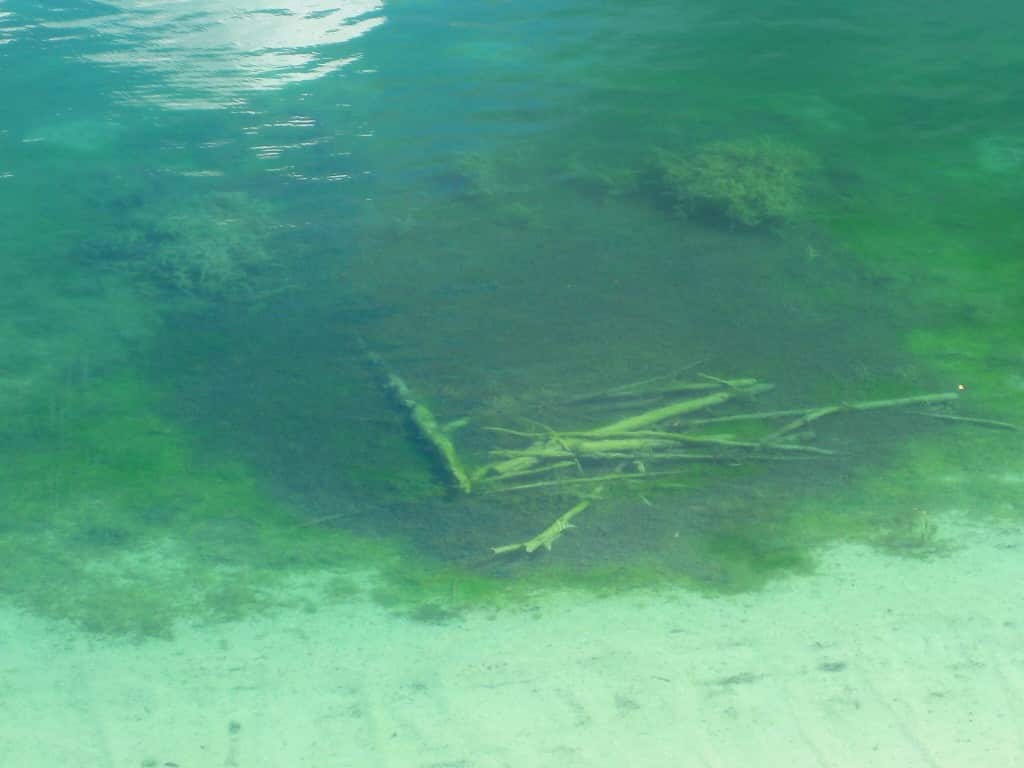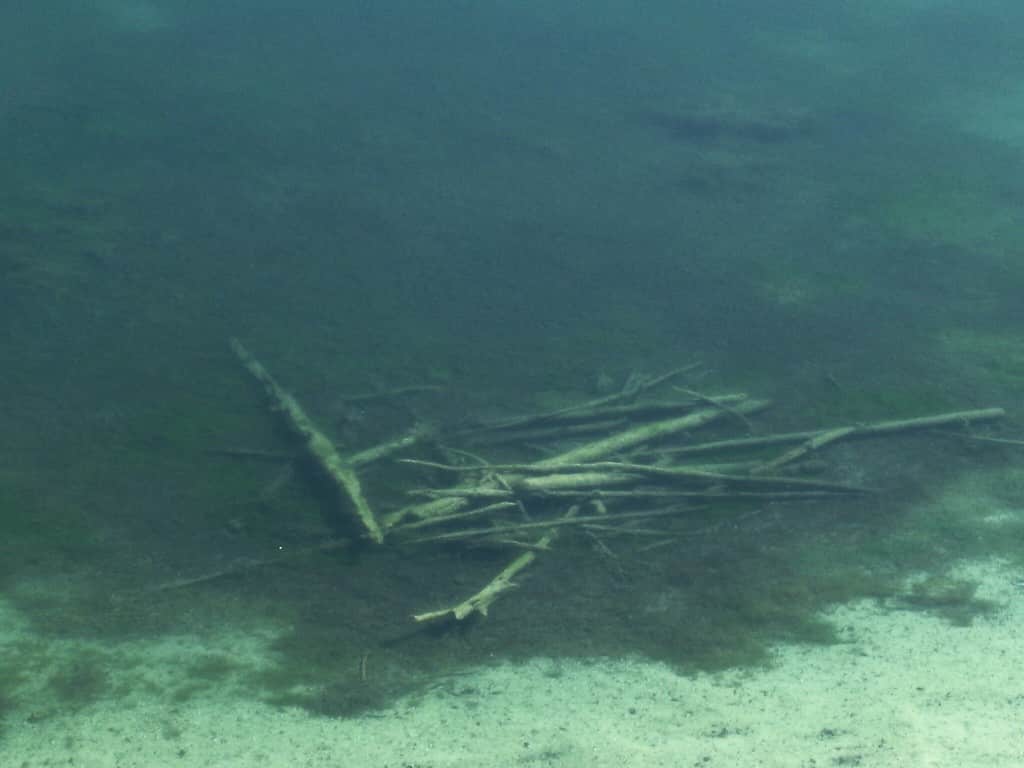After the final treatment of the year, we made a lot of progress in the reduction of the milfoil explosion this year. Here are before (9/4/12) and after (10/2/12) pictures I took from my deck of a big patch just 70 feet from the shoreline:
What you see are the plants in remission rather than progression. We still have a ways to go but we refuse to let this stuff take over our lake like it has at many lakes around the area.
Thank you to those property owners who let us know about plants in their area. We would like to hear from you regarding the effectiveness of the treatment for you.



Glad the treatment for milfoil helped. In the 50+ years our family has enjoyed Bear Lake, we always looked out on a sandy lake bottom. Seeing a weed or a log used to be a landmark! This year we were shocked at the density of spreading weeds that are quickly infiltrating from deeper water toward shore. We are on the west side of the lake. Weeds (so thick you can’t see any sand through them) have now approached the end of our dock! We have spent hours raking them out, but it barely makes a dent. (Also the smell of them is foul, so the task is unpleasant!) Your picture illustrates my point perfectly. While the larger milfoil plants may have been reduced, the “ground cover” is healthy and spreading. We’ve also noticed that the soft muck is worse than ever. Not sure what the species of “ground cover” is, but is there anything that can be done to slow it down or preferably, remove it from our swimming area? Looking seriously at a lake mat for next year!
Hi Sue –
We are all disappointed with the weed growth, unfortunately, since these are native plants, we are unable to get a permit to treat them. There are a lot reasons for weed growth but this year the warmer temperatures and the lower water levels probably contributed the most. There are several property owners that will tell you the lake mat works. In addition, I can speak from personal experience that regular raking, after relocating the mat, accomplishes several good things – it greatly reduces the soft sand, it prevents weed growth, it reduces the snail population, and clears up the water by stirring up the algae and sediment under the top layer of sand. You can see my rake lines in the top picture. It’s work but I love the results. The Board is vigilant and passionate about the lake so, rest assured, that if there is something that can be done we will get it done.
Sam